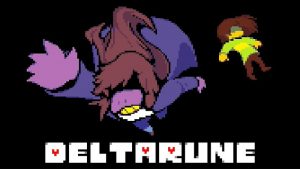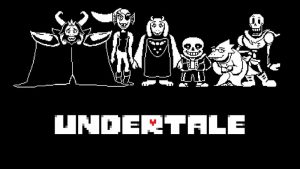Undertale is one of those games that are unavoidable as long as you’ve been online in the gaming community. Taking the world by storm in 2015, this indie RPG remains well-beloved even eight years later, boasting an average of 1000 players daily.
As a lover of Undertale myself, I’ve always taken it’s popularity for granted. It wasn’t until recently when multiple ‘playing Undertale in 2023’ videos began popping up on my YouTube feed that I took note of how bizarrely popular this game still is. How has it managed to still garner active engagement, rather than just retiring as an old game left to gather dust on the shelves of gaming history? And why has it spiked again in popularity, specifically in the last few months?
For the latter question, my efforts to search for a specific reason unfortunately proved futile. Nonetheless, Undertale’s 8th anniversary likely influenced these new uploads of playthroughs. This has been a common theme in the past few years, with increased discussion around the game as the anniversary nears, reminding people of the game’s existence and encourages to try playing it for themselves.

Toby Fox’s new game Deltarune (Image: steamXO via Flickr)
For this year’s anniversary, Toby Fox, the game developer of Undertale, is occupied producing the next chapers of his new game Deltarune, which created a noticeable absence of content. And with how high the view count is for recent playthroughs, such as Purplecliffe’s video reaching 627k views, it comes as no surprise that other YouTubers or streamers would jump on the bandwagon to glean some viewership.
Before researching this phenomenon, I hadn’t realized just how unique this game’s form of fame was. Most completed games typically remain as household names in the gaming industry, with barely any new discussion emerging after its initial wave of popularity. Conversely, fans of Undertale are still actively discussing aspects of it after almost a decade of its release, and boatloads of video essays on the RPG — ranging from its plot, game mechanics, or score are still being posted.

The main cast of Undertale (Image: steamXO via Flickr)
This game stands out from other popular indie games from the 2010s, such as Doki Doki Literature Club and Five Nights at Freddy’s, not only due to its unique and pioneering game mechanics, but also due to its finished-yet-unfinished story.
That’s probably a confusing sentence, so allow me to explain. Undertale was one of the first games that introduced meddling with the save files as part of gameplay, with the character Flowey actively interfering with your save file for his boss battle, while he and other characters constantly make references to your actions on a different save file. Sans remembers how many times he has killed the player, Flowey will call you out for reloading the game after you “regretted” killing Toriel, and even if the player tries to relieve their conscience by completing a pacifist run after doing the genocide route, they are met with a brutally defaced photo in the ending. Undertale remembers, and that fourth wall breaking in itself was already enough for it to leave a strong impression on most casual gamers.
However, Toby did not stop there. He knew the eventual fate that Undertale would face, that just like many other games, people would start data mining it, dissecting it to its bare bones until they gleaned every last secret from it. So he decided to outsmart them, and succeeded. See, he knew players would be attempting save manipulation to find what the game developer didn’t intend them to see, and while there is a whole catalogue of hidden rooms that people have successfully found on the Undertale wiki, what you find when you try accessing said rooms would be the Annoying Dog instead, a sprite representative of Toby within Undertale‘s world. While this can be avoided by disabling Dogcheck, it still shows Toby’s awareness of these data hunters, and he has specifically left easter eggs for them in certain rooms, one of them being the notorious Room 264 , where there is an encrypted message from the elusive character Gaster. You would think that that’s the end of Toby’s shenanigans, but this man still has more tricks up his sleeve. abc-123-a.ogg is one of the various unsued audio files that can be found within the game’s data. Upon playing it, the listener is met with a variety of voices, telling them to “have some respect” and “don’t spoil the game”. It’s tricks like these that show just how detailed Toby was in crafting his game, and the secrets or “gotcha” moments hidden in game files keep gamers discussing to this day.
As for the paradoxical state of its story that I mentioned, Undertale has a technically finished story, yet the deeper you dig into the game, not only do things not get clearer (as one would expect), but you realize that the deeper story isn’t finished at all. While the main plot of what happened between the Dreemur family is revealed through both the pacifist and genocide run, the “true pacifist” run reveals snippets of an unknown tale starring the elusive Gaster, and two other characters theorized to be Sans and Alphys. Gaster can only be found through combing through the game files and accessing rooms you weren’t supposed to, but even after all that digging there is no clear answer as to who he is, and what “experiments” the three have been doing. The fact that barely anything is known about him after eight whole years since the game has been released shows just how masterful Toby was in creating the story(ies) of Undertale, and explains why fans continue to theorize and engage with it to this day, in a desperate attempt to finally tie up the loose threads in the game.
Equipped with such unique advantages, it’s no wonder that Undertale is still so talked-about in recent years. And try as we might, there are things yet to be explored within this layered game.
Featured image by steamXO on Flickr
